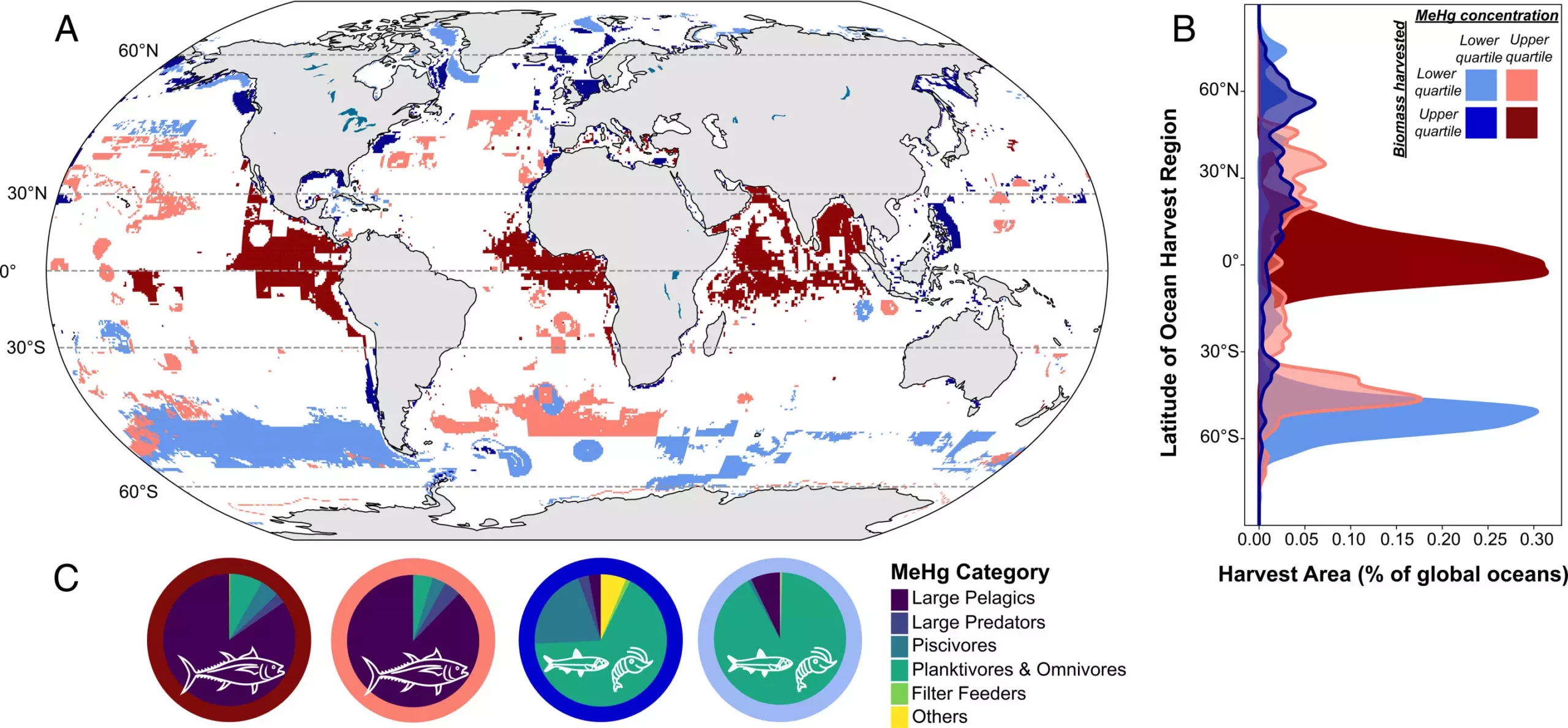As the global demand for seafood continues to rise, industrial fishing practices have evolved to accommodate our insatiable appetite for fish, particularly large pelagic species like tuna. This relentless harvesting from our oceans has led to significant environmental and health ramifications, most notably increased exposure to methylmercury, a highly toxic compound with severe implications for human health. Recent research conducted by the Harvard John A. Paulson School of Engineering and Applied Sciences, in partnership with the University of Delaware and the University of British Columbia, has illuminated the alarming connection between industrial fishing and elevated levels of methylmercury in our diets.
The study highlights that over 70% of the methylmercury extracted from the ocean originates from industrial fisheries targeting large fish in tropical and subtropical waters. This statistic raises an urgent call for awareness of the often-overlooked side effects of consuming these fish. While technologies that facilitate large-scale fishing, such as onboard freezing systems and fish aggregating devices, have made tuna and similar species more accessible, they concurrently contribute to a food supply that can be harmful to human health.
Methylmercury, primarily resulting from atmospheric mercury emissions linked to coal combustion, industrial activities, and even volcanic activity, is increasingly becoming a significant public health concern. Once mercury settles in the ocean, it undergoes a transformation into methylmercury through microbial processes. This compound is notorious for its ability to bioaccumulate and biomagnify, meaning it becomes more concentrated as it moves up the food chain. Consequently, as larger marine predators consume smaller fish that contain methylmercury, their bodies accumulate higher levels of the toxin.
For vulnerable populations, particularly pregnant women and young children, exposure to methylmercury can result in severe developmental delays and neurological harm. In adults, the exposure poses risks to cardiovascular health, leading to a pressing need for consumers to reassess their seafood choices. The results from the Harvard-led study serve as a crucial reminder that while the nutritional benefits of fish are recognized—rich in omega-3 fatty acids and essential vitamins—the potential dangers associated with contaminants like methylmercury must not be underestimated.
The seafood market, especially for large pelagic fish, has seen a meteoric rise in popularity over the past few decades. The ascendancy of industrial fishing practices and the associated technological innovations have drastically changed how we view fish consumption, particularly regarding tuna. The combination of easier access and slightly lower prices has unwittingly promoted a dietary shift toward a reliance on fish species that inherently harbor higher methylmercury levels.
The findings from the research also indicate that the nutritional balance of these fish species may be skewed due to their environment. For instance, large pelagic fish caught in low-latitude waters often have reduced micronutrient levels, complicating the narrative of fish as a universally healthy food source. Moreover, as global warming exacerbates the situation, oceanic conditions could further diminish the nutritional value of the seafood harvested from these regions.
With alarming implications for public health, there is a growing need to advocate for more sustainable fishing practices. Transitioning from the preferential harvesting of large pelagic fish to smaller species can be an effective strategy. Smaller fish such as sardines, anchovies, and herring typically harbor lower concentrations of methylmercury while being rich in essential nutrients. By prioritizing these alternatives, not only can we mitigate the health risks posed by methylmercury exposure, but we can also support a more sustainable seafood industry.
Particularly concerning are subsistence fishers who rely on small-scale fishing for their daily sustenance. This group faces a heightened risk of exceeding safe methylmercury exposure levels, amplifying the disparities created by pollution—a problem they did not contribute to. Ensuring that these communities are protected from the adverse effects of industrial fishing practices must be a priority for policymakers and environmental advocates alike.
In summation, while industrial fishing practices have made large pelagic fish more accessible than ever, it is imperative to recognize the associated health risks posed by methylmercury. Consumer awareness and advocacy for sustainable fishing practices are crucial for navigating toward healthier seafood choices. As the demand for seafood evolves, understanding the delicate balance between health, nutrition, and ecological sustainability will play a foundational role in shaping our seafood consumption for generations to come.


Leave a Reply